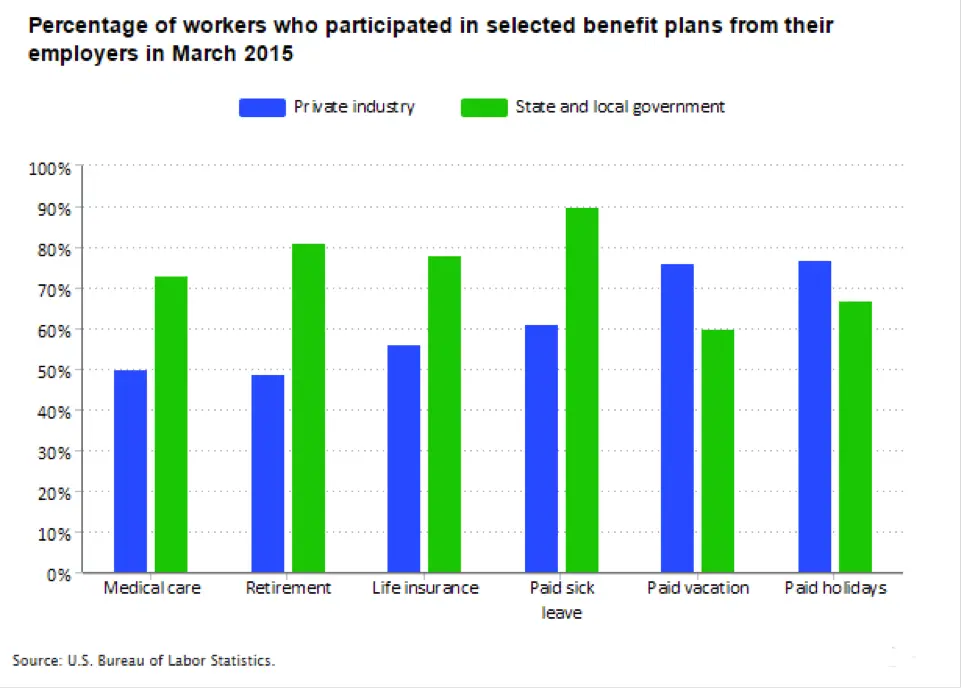Any discussion of benefits in the federal government must start with the knowledge that the federal workforce receives benefits vastly better than the average set of benefits available to the average private industry worker and in most state and local governments.
To that point, the Bureau of Labor Statistics recently published a chart showing the percentage of private sector and state and local government workers participating in a range of benefits.
To quote from the BLS Commissioner’s blog:
“The newest data show that 50 percent of private industry workers participated in a medical care benefit plan through their work, 49 percent had a retirement plan, and 61 percent had paid sick leave available.”
When Congressional Representatives and Senators talk about cutting back on federal benefits, they explicitly or implicitly know these numbers, and it makes the work of those trying to save or enhance those benefits so much harder.
Benefit packages do vary based on the size of the company, which BLS acknowledges in its blog.
“For example, paid sick leave benefits vary based on the number of workers at the employer’s location: 80 percent of private industry workers had paid sick leave in the largest establishments (500 workers or more), while 49 percent had paid sick leave in the smallest establishments (fewer than 50 workers). Looking at retirement benefits, 12 percent of private industry workers in the group with the lowest 10 percent of wages ($9.00 or less per hour) participated in a retirement plan through their employer. That compares with 78 percent of workers in the group with the highest 10 percent of wages ($43.27 or more per hour).”
There are very valid arguments for why the composition of the federal workforce is significantly different than the average private sector establishment in education, responsibilities, etc., and should be compared to the workforce of larger corporations, rather than just to the average worker.
But, as long as private sector employees feel that their tax dollars go to pay for benefits that are out of their own reach, the fight over benefits will continue.



